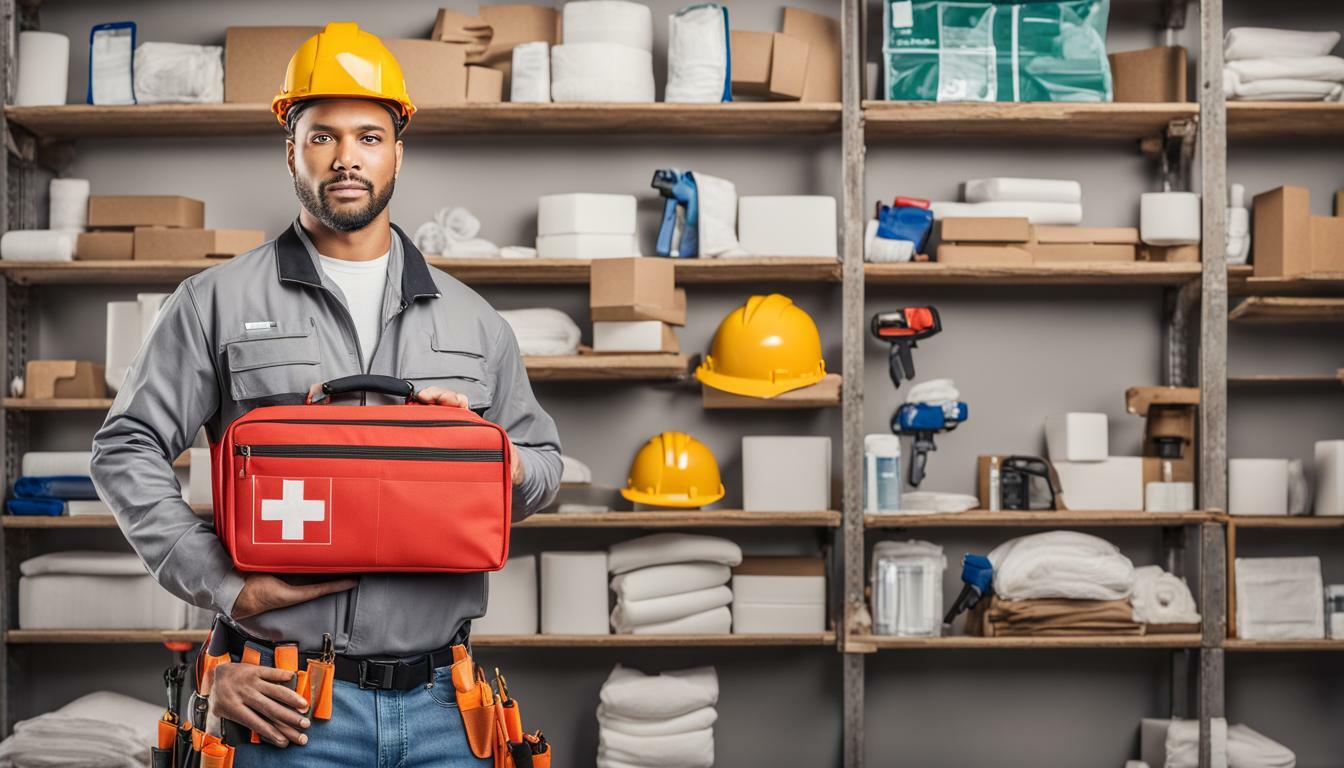Welcome to our guide on construction safety and the importance of having essential first aid kits for DIY home improvement projects. Whether you’re a seasoned DIYer or a beginner, safety should always be your top priority when working on a construction site. Accidents can happen at any time, and having the right tools at hand can make all the difference in providing swift and effective care. That’s why we’ve put together this comprehensive guide on DIY safety supplies and first aid supplies for construction.
When it comes to construction safety, being prepared is key. That’s why we’ll be exploring the essential items that should be included in your first aid kit to ensure you’re equipped to handle any emergency that may arise. From bandages to antiseptics and CPR masks, we’ll cover everything you need to know to create a comprehensive first aid kit for construction safety.
But first, let’s talk about why having a first aid kit is so important. DIY home improvement projects and construction sites can be hazardous places, with potential risks ranging from minor cuts and scrapes to severe injuries. Having a well-stocked first aid kit can mean the difference between a minor injury and a more serious one. With the right supplies on hand, you can act quickly to provide care and prevent further injury.
So, let’s dive in and explore the world of DIY safety supplies and first aid supplies for construction. By the end of this guide, you’ll have all the tools you need to create a safe and effective work environment for your DIY projects. Let’s get started!
The Importance of Construction Site Safety
Construction sites pose serious risks to workers and visitors alike. Injuries can occur due to falls, heavy machinery, electrical hazards, and more. It is essential to prioritize construction site safety to minimize the risk of accidents and injuries.
One of the key components of construction site safety is having proper construction safety equipment. Hard hats, safety glasses, earplugs, and safety gloves are just a few examples of the PPE (personal protective equipment) that should be provided to workers. The equipment must meet the required safety standards and be regularly inspected and maintained.
Aside from PPE, having first aid kits readily available is crucial for handling emergencies. These kits should contain essential items such as bandages, antiseptics, and CPR masks. For DIY home improvement projects, first aid kits should be tailored to the specific hazards and risks present, such as power tools or working at heights.
It is also important to ensure compliance with safety regulations and guidelines. Neglecting safety measures not only puts individuals at risk but can also result in legal consequences. Employers and individuals have legal obligations to maintain a safe work environment and adhere to safety regulations.
Overall, prioritizing construction site safety is crucial for preventing injuries and maintaining a safe work environment. By having the proper construction safety equipment and first aid kits readily available, individuals can respond quickly and effectively to emergencies. Compliance with safety regulations and guidelines is essential to ensure the well-being of all workers and visitors.

Understanding DIY Safety Supplies
DIY home improvement projects and construction sites can be hazardous, hence, it’s crucial to have the right safety supplies readily available. You never know when an accident can happen, so being prepared can make all the difference. In this section, we will take a closer look at the different types of DIY safety supplies that you should have in your toolbox and construction site first aid kit.
Protective Gear
Personal protective equipment (PPE) is an essential component of DIY safety supplies. PPE includes goggles, gloves, hard hats, and respiratory masks. These items offer protection against airborne particles, chemicals, and other hazards that may arise during construction.
Additionally, it’s important to wear the right clothing when engaging in DIY projects. Avoid loose clothing that can get caught in machinery or tools, and opt for long sleeves and pants to minimize the risk of cuts and abrasions.
First Aid Supplies
While you may already have a first aid kit at home, it’s important to ensure that it is well-stocked and equipped to handle injuries that may occur during DIY home improvement projects. A well-stocked first aid kit should include bandages, gauze pads, adhesive tape, antiseptics, and pain relievers. You may also want to add items such as a CPR mask, scissors, and tweezers.
It’s also important to consider the specific needs of your DIY projects when stocking up on first aid supplies. For instance, if you’re working with power tools, you may want to include an eyewash solution in your first aid kit to quickly flush out any debris that may get into your eyes.
Emergency Tools
DIY safety supplies can also include emergency tools such as flashlights, batteries, and a whistle. These items can come in handy during emergencies, such as power outages or when you need to call for help.
Another important tool to consider is a fire extinguisher. Fires can happen in a matter of seconds, so having an extinguisher on hand can be a lifesaver. Be sure to learn how to use it properly and keep it in an easily accessible location.
By having these essential DIY safety supplies at your disposal, you can minimize the risk of accidents and injuries during your home improvement projects. Remember to periodically check your supplies and replenish them as needed to ensure that you are always prepared for any situation that may arise.
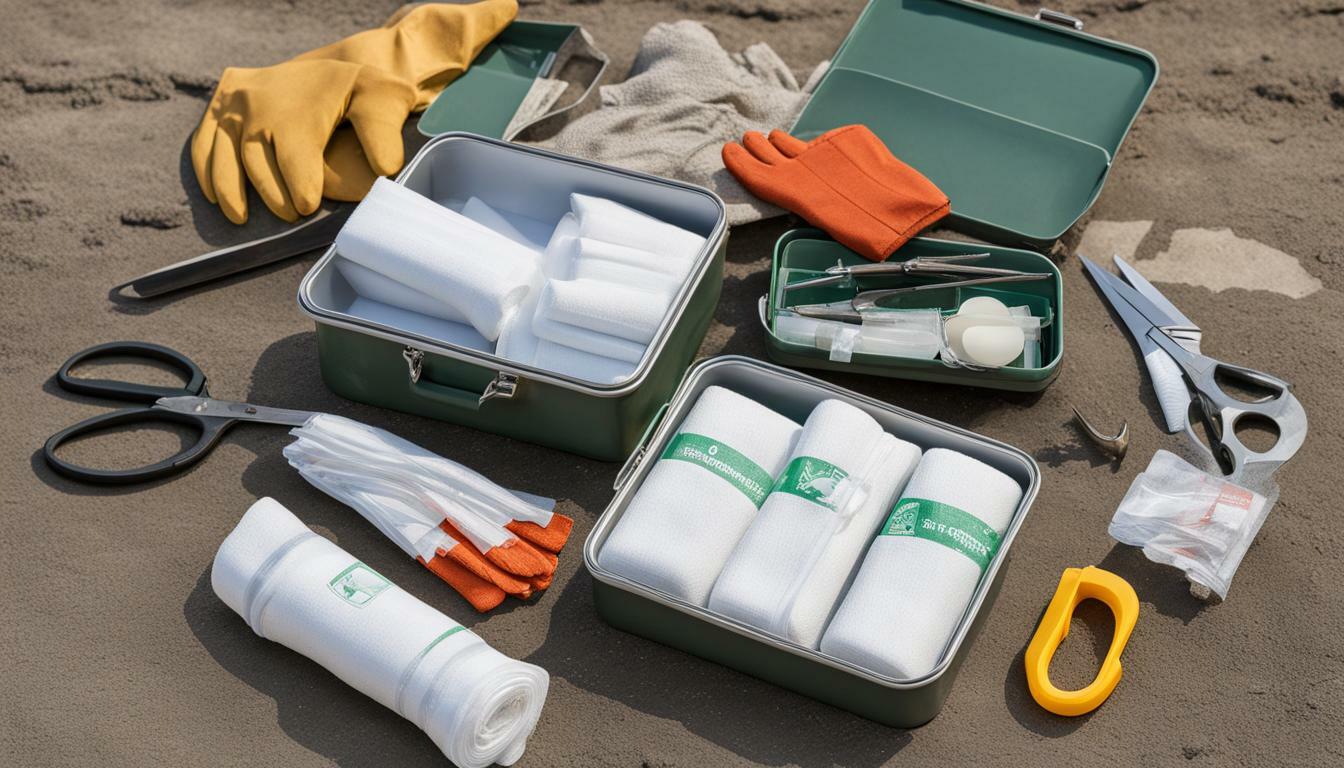
Essential First Aid Supplies for Construction
Injuries can occur at any construction site, which is why having a comprehensive first aid kit is crucial. When accidents happen, it is important to have all the necessary first aid supplies readily available to provide immediate care.
The following list outlines the essential first aid supplies that should be included in a kit for construction safety:
| Item | Purpose |
|---|---|
| Bandages (assorted sizes) | To cover and protect wounds and prevent infection. |
| Sterile Gauze Pads | To control bleeding and clean wounds. |
| Triangular Bandages | For immobilization of broken bones and sprains. |
| Adhesive Tape | To secure bandages and gauze pads in place. |
| Antiseptic Wipes | To clean wounds and prevent infection. |
| Instant Cold Compress | To reduce swelling and relieve pain caused by sprains and strains. |
| CPR Mask | To protect against disease transmission during CPR. |
| Tweezers | To remove debris from wounds. |
| Disposable Gloves | To protect against bloodborne pathogens and other bodily fluids. |
By including these essential first aid supplies in your kit, you can provide prompt care in case of emergencies and ensure the safety of yourself and others on the construction site. Always keep the kit in a visible and accessible location, and make sure to regularly check and replenish the supplies as needed.
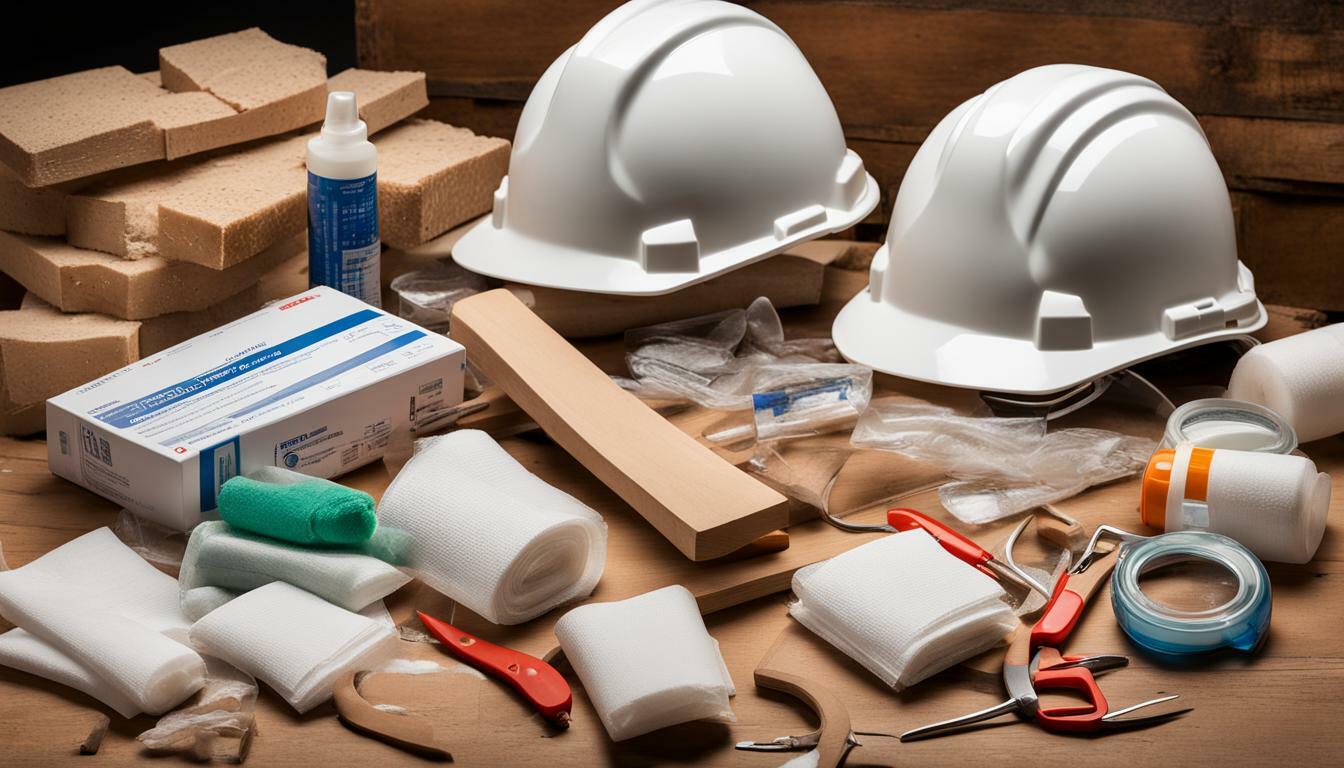
Preparing Your Toolbox for Emergencies
When engaging in DIY home improvement projects, it is essential to have a first aid kit on hand. But where should you store it? A great option is to integrate it into your toolbox! Not only does this keep everything in one place, but it also ensures easy accessibility during emergencies.
Consider using a durable, waterproof toolbox to protect your supplies from damage. Keep in mind that the size of your kit should correspond to the size of your toolbox. A large kit may be difficult to store and retrieve from a small toolbox.
Organizing your kit is also important. Group similar items together and label them appropriately to avoid confusion during an emergency. For instance:
| Item | Label |
|---|---|
| Bandages | Cuts and scrapes |
| Gloves | Hand protection |
| CPR mask | Respiratory emergencies |
Periodically check and replenish your supplies, ensuring that you have enough materials for future projects. This will help you avoid delays and give you peace of mind while working on your DIY projects.
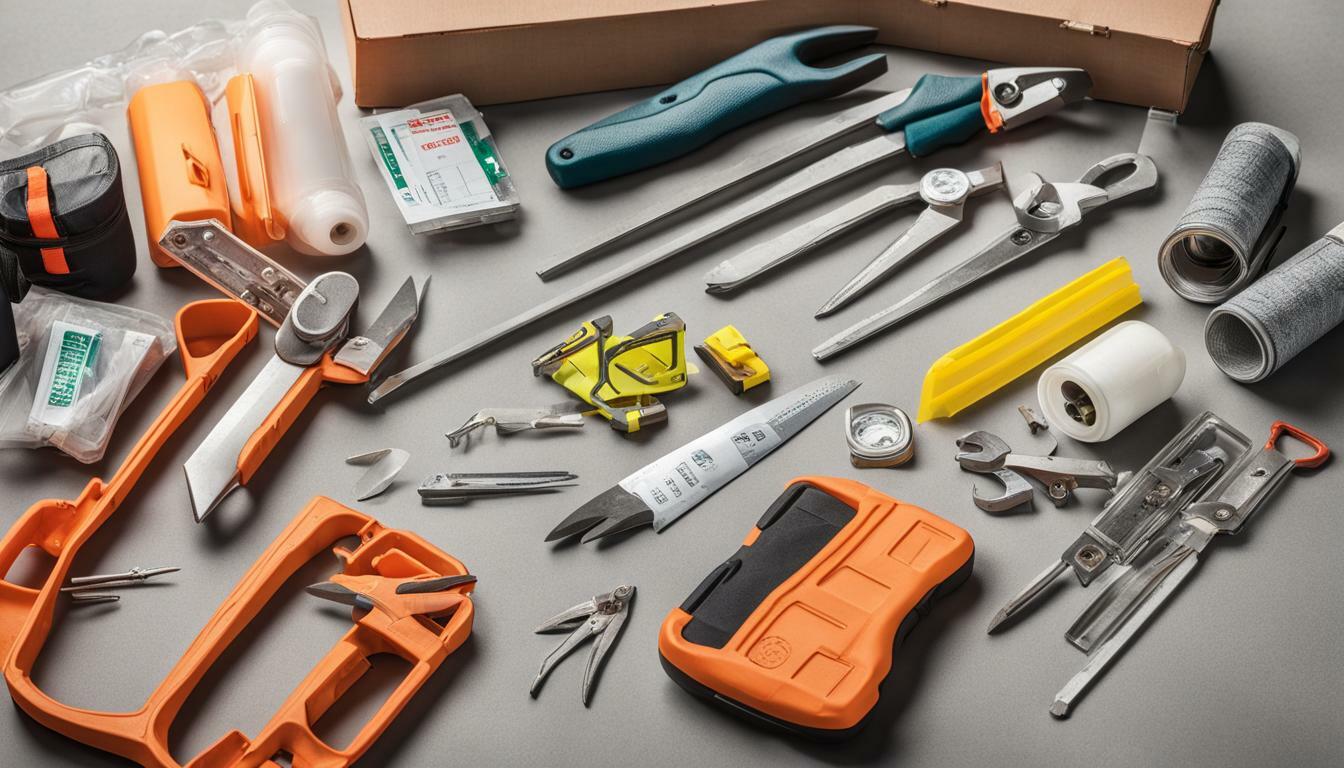
By integrating your first aid kit into your toolbox, you can ensure that you are prepared for any medical emergencies that may arise during your DIY home improvement projects. Stay safe and have fun!
Common Injuries in DIY Home Improvement
DIY home improvement projects can be a fun and fulfilling way to make improvements to your home, but they can also lead to accidents and injuries if proper safety precautions are not taken. It is essential to be aware of the potential hazards and how to prevent them to ensure a safe and successful project.
One common injury is cuts. Sharp tools such as saws, knives, and scissors are often used in DIY projects, making cuts a prevalent injury. It is crucial to keep these tools sharp and maintained to prevent slipping and causing accidental cuts. Wearing protective gloves can also provide an additional layer of protection.
Burns are another frequent injury, particularly when using equipment such as welding torches or soldering irons. Being aware of the equipment’s safety guidelines and wearing protective clothing such as heat-resistant gloves and aprons can help prevent burns.
Falls are also a substantial risk during DIY projects, especially when using ladders or standing on elevated surfaces. It is essential to use a sturdy ladder and have someone hold it steady while climbing. Wearing non-slip shoes or boots can also help prevent falls.
Eye injuries can occur due to flying debris or dust, making it essential to wear safety goggles when cutting or drilling. Wearing a dust mask can also help prevent respiratory issues.
Electric shock injuries can occur when working with electrical wiring or equipment. It is crucial to ensure that the power is switched off before beginning work and using insulated tools.

By being aware of these common injuries and taking the necessary precautions, individuals can minimize the risk of accidents during DIY projects. However, it is important to remember that emergencies can still happen. Having a fully stocked first aid kit and knowing basic first aid techniques can make all the difference in ensuring a safe and successful DIY project.
Addressing Medical Emergencies on the Construction Site
When it comes to construction safety, having the right medical supplies on hand can be the difference between life and death. Whether you are a professional contractor or a DIY enthusiast, accidents can happen, and it is essential to be prepared.
First aid supplies for construction should be designed to handle a range of medical emergencies. Items such as bandages, antiseptics, and gloves are must-haves for treating minor cuts and injuries. However, for more severe situations such as fractures and severe bleeding, additional supplies such as CPR masks and splints may be necessary.
Proper training is also crucial in addressing medical emergencies on the construction site. All workers should be familiar with the first aid supplies and know how to use them in an emergency. Communication protocols should be in place to ensure emergency responders can be quickly contacted and arrive on the scene as soon as possible.
By prioritizing construction site safety and having comprehensive first aid supplies on hand, workers can be better prepared to handle medical emergencies. Remember to periodically check and replenish your first aid kit to ensure it is always up to date.
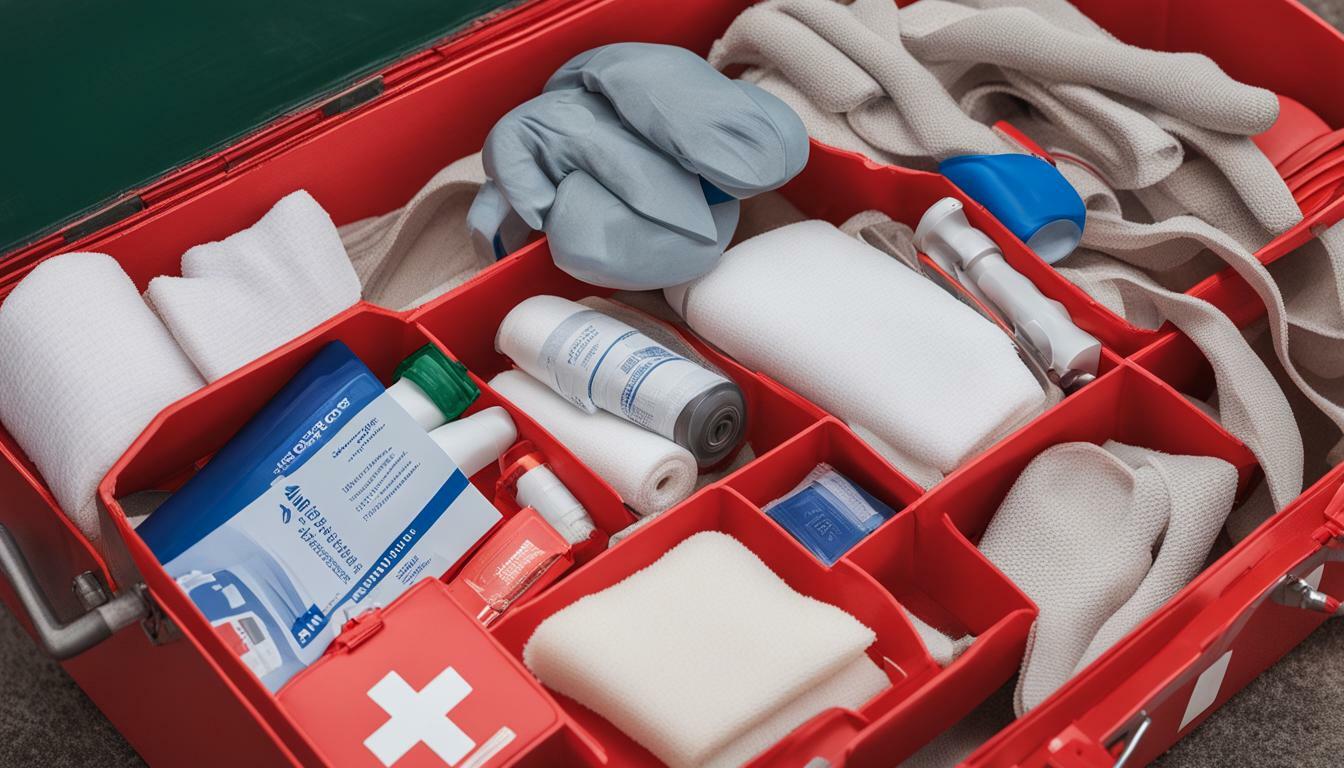
“It’s better to have it and not need it, than to need it and not have it.”
Additional Safety Measures for DIY Projects
When it comes to home improvement projects, safety should always be a top priority. While having a well-stocked first aid kit is essential, there are other safety measures that individuals should consider to prevent injuries and accidents. Here are some additional DIY safety supplies and construction safety equipment to keep in mind:
Personal Protective Equipment (PPE)
Wearing appropriate personal protective equipment (PPE) can significantly reduce the risk of injuries. This includes safety glasses, gloves, hard hats, and safety shoes. Make sure to wear PPE that is specifically designed for the task at hand.
Proper Tool Handling
Improper tool handling is a common cause of injuries during home improvement projects. Always read the manufacturer’s instructions and follow recommended safety procedures. This includes using tools for their intended purpose and never removing safety guards or other safety features.
Safety Guidelines
Follow established safety guidelines for the task at hand, such as using ladders properly and never standing on furniture or unstable surfaces. Take the time to properly set up your work area, and always have a spotter when working with heavy materials or equipment.
By taking these additional safety measures, individuals can ensure a safe and successful home improvement project. Remember to always prioritize safety over speed and efficiency, and don’t be afraid to ask for help or advice when needed.
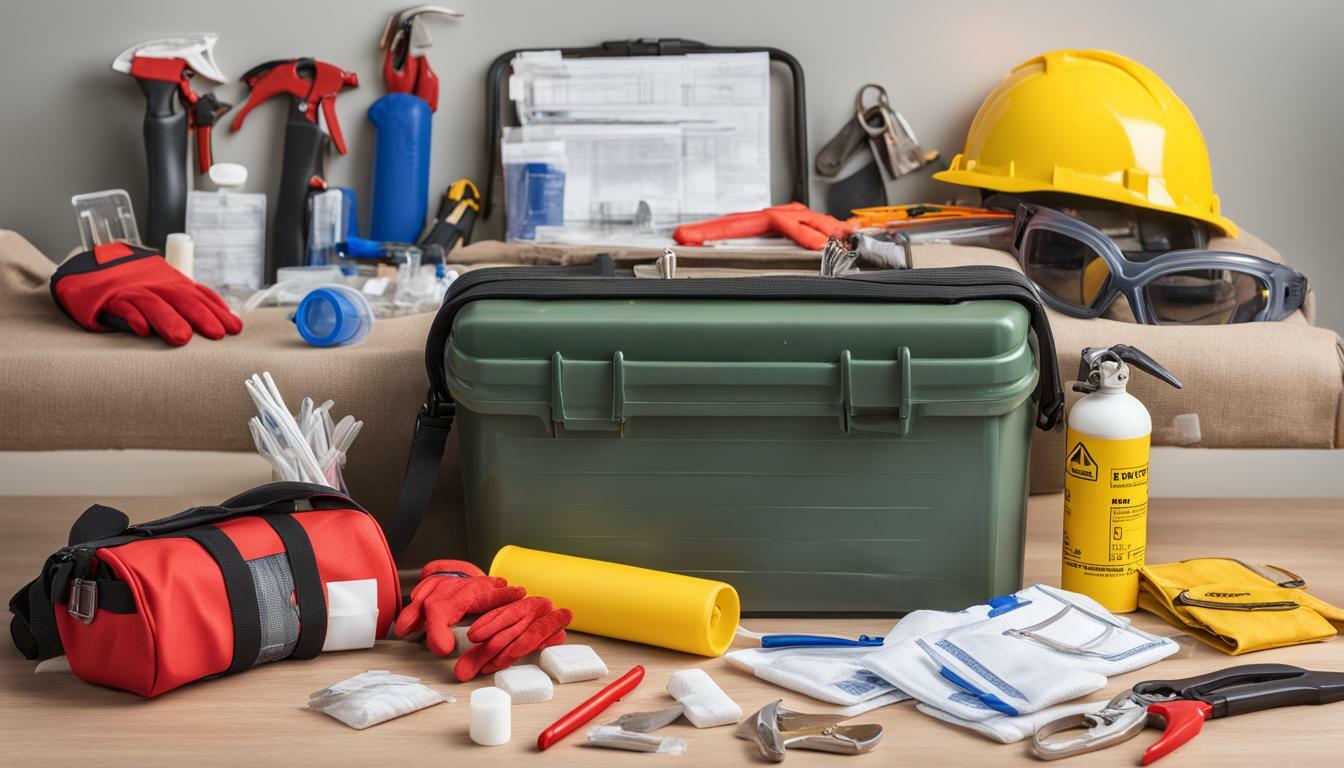
Ensuring Compliance with Safety Regulations
Construction site safety is of utmost importance, and adherence to safety regulations is imperative. Failure to comply with safety regulations can result in serious consequences, including fines and legal action. It is the responsibility of all individuals involved in DIY home improvement projects and construction sites to ensure compliance with regulations and guidelines.
By prioritizing safety and compliance, individuals can protect themselves and others on the construction site. This includes making sure that proper DIY safety supplies are readily available and that they are used correctly. It is crucial to understand the risks involved in DIY construction projects and take appropriate steps to mitigate them.
Regular safety inspections and assessments should be conducted to ensure that all safety measures are in place and functioning correctly. Any hazards or issues should be addressed promptly to prevent accidents and injuries. This includes proper handling of tools and equipment, wearing personal protective equipment (PPE), and maintaining a clean and organized work area.
Additionally, it is important to stay up-to-date with any changes or updates to safety regulations and guidelines. This can be achieved through ongoing education and training in construction safety. Ensuring that all individuals involved in DIY home improvement projects and construction sites are knowledgeable and prepared can go a long way in preventing accidents and injuries.
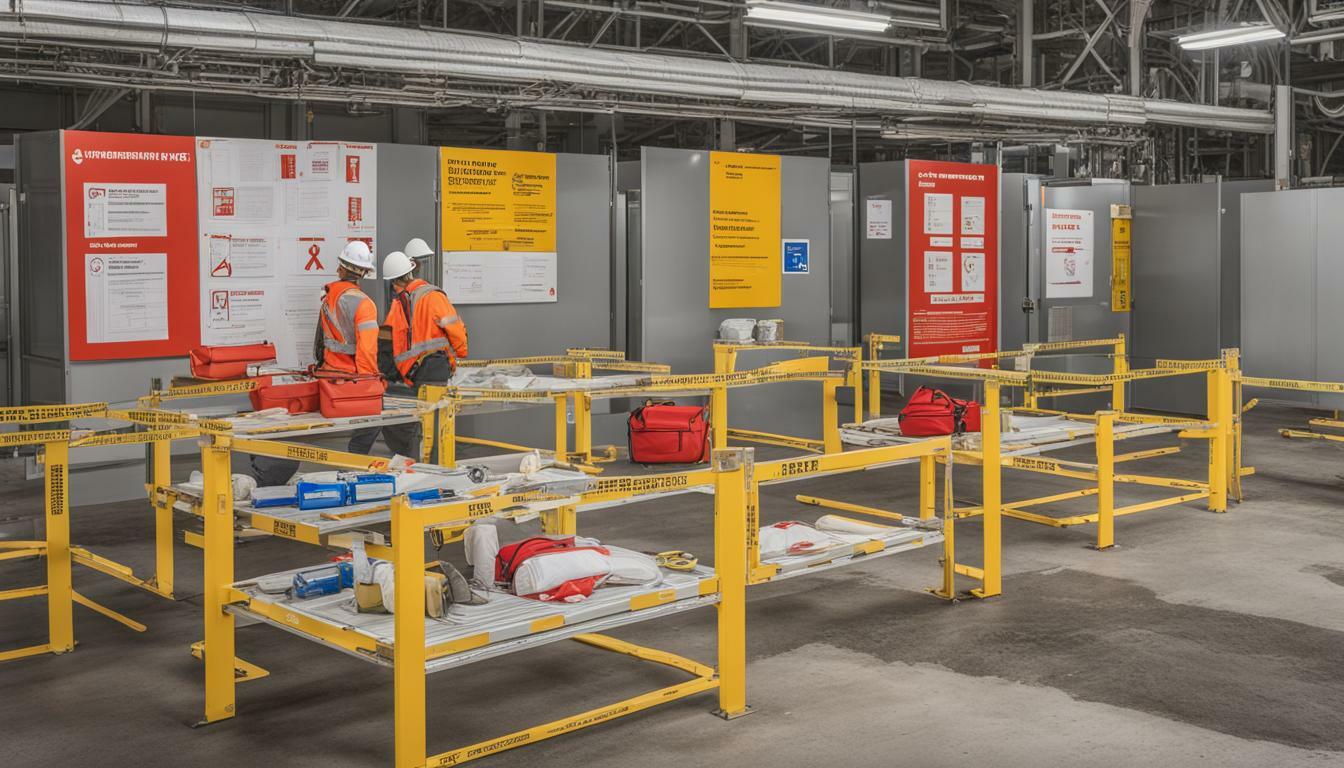
Compliance with safety regulations should be a top priority for anyone involved in DIY home improvement projects and construction sites. By prioritizing safety and taking appropriate measures, individuals can protect themselves and others while minimizing the risk of injuries. Remember to regularly check and replenish your first aid supplies, stay informed about safety regulations and guidelines, and prioritize ongoing education and training in construction safety. Let’s work together to ensure safe and successful DIY projects.
Training and Education for Construction Safety
Construction safety is a critical component of DIY home improvement projects. Part of ensuring safety on construction sites involves training and education.
As a DIY enthusiast or construction worker, it’s essential to have a comprehensive understanding of safety measures. This knowledge is crucial in identifying potential hazards and knowing how to prevent accidents. Additionally, safety training equips individuals with the necessary skills to handle emergencies promptly.
First aid and safety training are vital components of construction safety. Training on how to use safety supplies such as goggles, gloves, and masks ensures proper usage. Additionally, training on how to administer first aid measures promptly can save lives.
Educational resources on DIY construction safety are readily available. Online safety courses and workshops provide invaluable information on how to handle construction tools and equipment safely. Additionally, organizations such as the Health and Safety Executive offer comprehensive guides on construction safety regulations and guidelines.
It’s vital to note that knowledge and preparedness through training and education can help create a safety-focused culture in the construction industry. Employers should ensure that employees receive proper training and education on safety measures. This focus on safety creates safer work environments and reduces the risk of accidents and injuries.
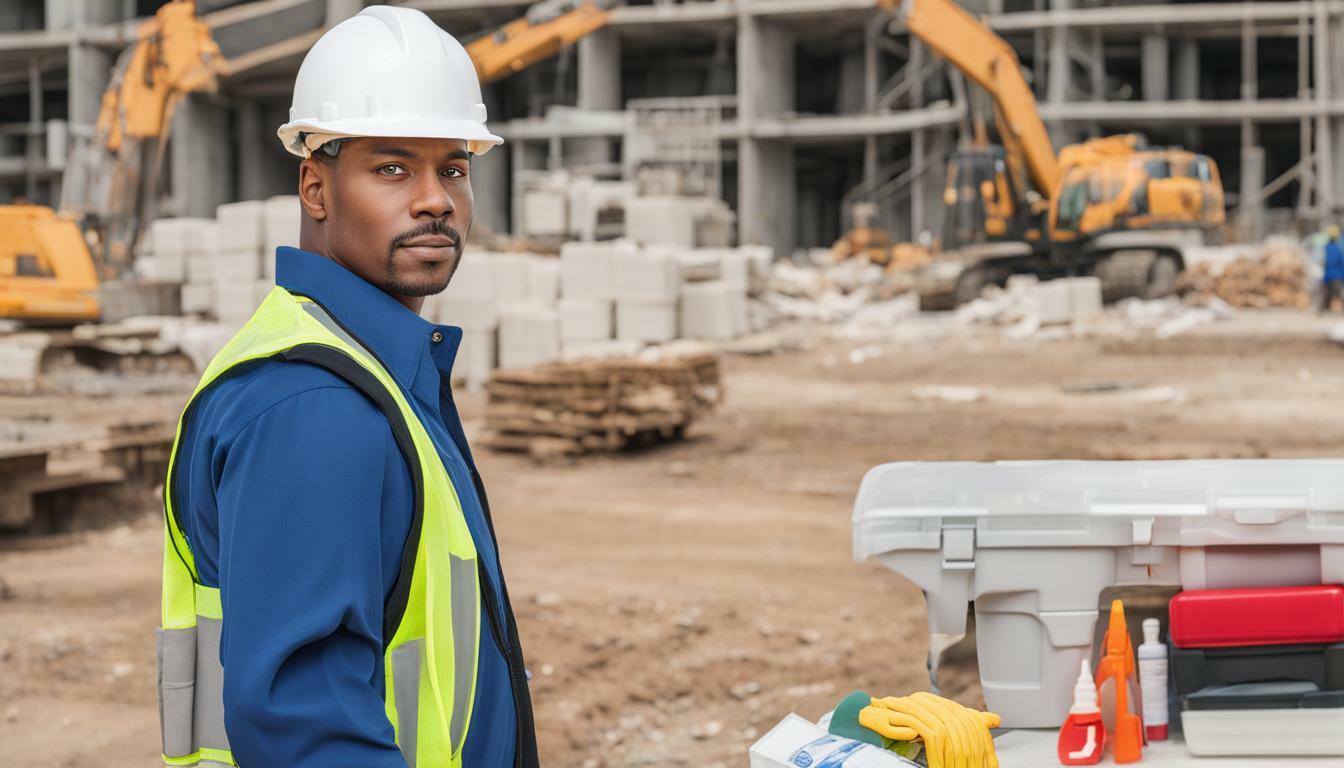
Overall, training and education are essential components of construction safety. Investing in these resources helps ensure that individuals are equipped with the necessary skills and knowledge to prevent accidents and handle emergencies swiftly and effectively. Take the necessary steps to stay safe and prioritize safety in DIY home improvement projects and construction sites.
Conclusion
DIY home improvement projects and construction sites can be rewarding and fulfilling, but they come with inherent safety risks. To mitigate these risks, having essential first aid supplies readily available is crucial. It is important to understand construction site safety measures and comply with regulations, while also understanding the proper use of safety supplies and personal protective equipment (PPE).
By incorporating first aid kits into your toolbox and taking the necessary safety precautions, you can minimize the risk of injuries and promote a culture of safety. Additionally, investing in training and education can equip individuals with the knowledge and skills needed to handle emergencies effectively.
Remember, safety should always be a top priority. So, stay safe and enjoy your DIY ventures with peace of mind, knowing that you have the necessary tools to handle any emergencies that may arise.
